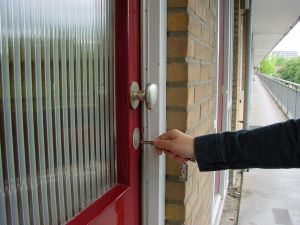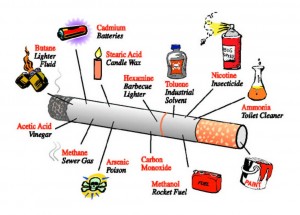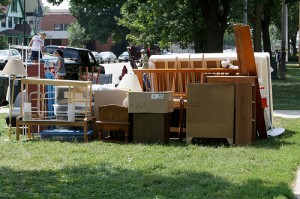Posted by Teresa on December 23, 2010 under Housing Trends, Landlord Paperwork and Forms, Tenant Credit Checks | 
 Short-term leases are becoming more popular in some areas of the country. One trend is that homeowners who sell a home are less willing to buy right away, so while they wait and see what the market will bring, they rent for a while. Another factor is the toll the economic crisis took on renters’ credit scores. Landlords are less willing to take chances on one-year leases, so often a month-to month or six-month lease is a great option.
Short-term leases are becoming more popular in some areas of the country. One trend is that homeowners who sell a home are less willing to buy right away, so while they wait and see what the market will bring, they rent for a while. Another factor is the toll the economic crisis took on renters’ credit scores. Landlords are less willing to take chances on one-year leases, so often a month-to month or six-month lease is a great option.
When the economy and job market are both doing well, the ideal situation for a landlord is a one-year lease with a strong tenant. But even though the rental markets across the country are starting to show improvement, many landlords are far from the ideal—and they still need to fill rental units.
When credit scores are less than perfect, and home sellers are knocking on your door, looking for short-term leases, it makes sense to adjust your lease terms from one-year to six-month or month-to-month.
Month-to-month leases mean that at the end of any month, the tenant can simply move—or the landlord can end the lease. Most leases require notice on each side, but if neither side ends the lease, it continues for another month.
7 Advantages of Short-term Leases:
- Your rental units could be occupied instead of empty
- Improved cash flow
- Possibility of higher rent negotiation
- Easier transition between tenants (less clean-up and maintenance)
- Larger pool of possible tenants
- You can get rid of a bad tenant more quickly
- For month-to-month leases, the rent can be adjusted at any time
Remember, no matter what the length of the lease, proper tenant screening is the most important step you can take prior to signing it. Conduct a thorough tenant credit check and background check and you’ll feel better about offering a lease to short-term tenants.
Posted by Teresa on December 21, 2010 under Landlord Tenant Lawsuits | 
 A recent case in Florida shows the U.S. Department of Housing and Urban Development (HUD) has little tolerance for racial discrimination against tenants. In this case, HUD charged the owners of a single-family home in Gibsonton, FL, with violating the Fair Housing Act (FHA). The charges include engaging in discriminatory housing practices for reneging on an agreement to rent the house to a woman and her children because they are African American. It also includes charges that the owners used racial slurs when referring to and addressing the family.
A recent case in Florida shows the U.S. Department of Housing and Urban Development (HUD) has little tolerance for racial discrimination against tenants. In this case, HUD charged the owners of a single-family home in Gibsonton, FL, with violating the Fair Housing Act (FHA). The charges include engaging in discriminatory housing practices for reneging on an agreement to rent the house to a woman and her children because they are African American. It also includes charges that the owners used racial slurs when referring to and addressing the family.
Most landlords are very familiar with the FHA, which bars discrimination against persons based on race, color, national origin, religion, sex, familial status (including children under the age of 18 living with parents or legal custodians), pregnant women (and people securing custody of children under the age of 18), and handicap (disability).
In the Florida case, the suit alleges that the owners initially agreed to rent the home to an African American woman and her three children. Two days after they moved in, the owner refused their rent payment. He then ordered the children out of the house while their mother was at work, and changed the locks. A relative found the kids about a quarter mile from the house, under a highway underpass.
Subsequent interactions between landlord and tenant included several uses of a racial slur, according to the tenant. The owners by then had rented the house to another tenant.
The case will be heard by an administrative law judge, who may award damages if he or she finds discrimination has occurred. The judge may impose punitive damages to deter further discrimination, as well.
The lesson here is nothing new: discriminating against a current or potential tenant on the basis of race is illegal. Landlords must be blind to race, disability, country of origin, religion, family status and color. And those who aren’t will face the consequences.
Posted by Teresa on December 16, 2010 under Housing Trends, Landlord Tips | 
 A new study in Pediatrics suggests that children living in apartment buildings are at higher risk of exposure to passive smoke than children living in detached houses. Experts say that components of tobacco smoke that are harmful to children can seep through apartment walls, then be absorbed by furniture, curtains, clothing and carpet. This makes vulnerable children unable to avoid exposure.
A new study in Pediatrics suggests that children living in apartment buildings are at higher risk of exposure to passive smoke than children living in detached houses. Experts say that components of tobacco smoke that are harmful to children can seep through apartment walls, then be absorbed by furniture, curtains, clothing and carpet. This makes vulnerable children unable to avoid exposure.
The study focused on 5,000 children who live in smoke-free households, including detached houses, duplexes and apartment buildings. Researchers looked for cotinine, a product of nicotine and a highly sensitive marker for tobacco, in the children’s blood. The study found that overall, 73% of the kids were exposed to tobacco. Of children who live in apartment buildings, 84.5% had cotinine levels indicating tobacco exposure, while only 70.3% of children living in detached homes did. For children in semi-attached or duplex homes, the figure was 79.6%.
These numbers suggest that no matter where they live, children have no control over second-hand smoke. But in apartment buildings, the chance of exposure is much higher than for kids in detached homes. No matter who is smoking, even if they are in an apartment on the next floor or down the hall, the chemicals and carcinogens travel through ventilation systems, shared walls and ductwork.
Other findings were that tobacco contaminants were highest in children under 12, those who are black and those who live below the poverty level. While parental smoking is the most common source of secondhand smoke exposure, the new study shows that parents even the children of nonsmoking are exposed to these harmful substances.
While it’s too early to know what ramifications studies like this will have on legislation, it’s not too far outside the realm of possibility to imagine that rental property owners who allow smoking in their units could, at some point, be held responsible for damages to non-smokers’ health. In a perfect world, no one would be exposed to others’ harmful habits—especially children who have absolutely no choice in the matter. Until then, rental property owners can convert their properties to smoke-free housing. This study could be the most compelling reason to do so ever.
Posted by Teresa on December 14, 2010 under Landlord Paperwork and Forms, Landlord Tips | 
 Many tenants notify landlords of their plans to move at the end of a lease by mentioning it in passing. Others assume that, if they haven’t signed a new lease, the landlord knows they are moving and they don’t need to notify.
Many tenants notify landlords of their plans to move at the end of a lease by mentioning it in passing. Others assume that, if they haven’t signed a new lease, the landlord knows they are moving and they don’t need to notify.
It’s a good idea to require tenants to provide a written notice of their intent to move. Many states require it, and if you use a well-written lease, it probably does as well.
The Advantages of Written Notices
Requiring tenants to put their intentions in writing is a good idea for several reasons:
- It eliminates the mix-up that can occur with verbal notifications
- It keeps the landlord/tenant relationship more businesslike
- It may be state law
- Written notices leave nothing to the imagination
- You won’t forget the tenant’s move-out date, which can lead to problems
- You’ll have time to prepare the security deposit return or deductions
What to Include on a Tenant’s Notice of Intent to Vacate Unit
Use a simple form, either one you obtain online or one you create yourself. You can provide it to tenants at lease signing, although it’s not likely they’ll keep it around long enough to turn it in at the end of the lease. Many landlords provide a form to tenants 60 or 90 days before the lease is up, with instructions to return it within 30 days of the end of the lease, if they plan to move.
The form should include:
- The date the form was completed;
- The name of the landlord or property management company;
- The address of the rental unit;
- Legal language including: The undersigned Tenant (name) hereby gives written notice of intent to vacate the rental unit at (address) on (date);
- A statement that the tenant understands they are responsible for rent until the end of the current lease or the day they vacate the unit, whichever is later;
- A statement that in accordance with the lease, the landlord is allowed reasonable access with advance notice to show the rental unit to prospective renters or contractors;
- A line for the tenant to sign and date the form.
As you can see, a thorough tenant move-out form covers all the bases: the date of the move-out, the day the rent is to be paid through, and permission to show the unit or allow access to workers.
Landlords who want even more information can include a short survey on the form, asking why the tenant is moving and if there is anything that could have been done to keep him or her as a tenant. This type of feedback is extremely valuable!
Pre-screen all tenants as part of your standard application process. Background and credit checks will help ensure you rent to qualified tenants. For more landlord resources, including forms and information on tenant screening, turn to E-Renter.com.
Posted by Teresa on December 7, 2010 under Tenant Credit Checks, Tenant Screening & Background Checks | 
 Why Pre-Screen Tenant Applicants?
Why Pre-Screen Tenant Applicants?
There are several advantages to screening tenants prior to signing a lease. One is that you can avoid discrimination issues by applying the same approval standards to every lease applicant—including a standard background and credit check. Another advantage is the reduction of risk. Why take a chance on a tenant who could have a history of evictions or an income that cannot support the rent? Mitigate risk by conducting a thorough credit check on every tenant.
What Will I Learn From a Tenant Credit Check?
You can learn at a glance if your prospective tenant pays credit card bills and loans promptly, as well as if there are any outstanding judgments against him or her. Previous bankruptcies are also typically reported. or bankruptcy filings. You can determine the minimum level of approval for your applicants, based on a good record of responsible finances and living within their means.
Be sure to compare the report’s list of an applicant’s previous addresses with those provided on the lease application. Are there inconsistencies? If so, the tenant is hiding something, or there is a legitimate explanation. Either way, you need to know before you sign a lease.
The information you gather from a tenant credit report must be held in strictest confidence, and never shared with third parties. Your applicant may have a right to the report—check your state’s guidelines and the Fair Credit Reporting Act (FCRA) to be sure you are compliant. If you reject an applicant for credit reasons, you must advise them in writing. Your best and easiest way to screen tenants is through a reputable, professional tenant screening service.
Consistency Counts When Screening Tenants
It’s important to be consistent when it comes to pre-screening tenants.
- Screen all lease applicants, no matter how they look, dress, or what kind of car they drive.
- Use the same screening procedures for each prospective tenant. Exceptions could be interpreted as favoritism toward or discrimination against a certain group.
- Establish a clear policy of background checks on all applicants to protect your rental property business.
Remember! Use a screening service with nationwide coverage and access to all three credit bureaus.
Posted by Teresa on December 3, 2010 under Landlord Paperwork and Forms, Landlord Tips | 
 Have a tenant moving out? Wouldn’t you love for him or her to leave your rental unit in a state that will make you smile? Why not just tell them exactly what you want? Sometimes tenants need to know your expectations. While there are no guarantees they will fulfill them, providing them with a tenant move-out checklist can make that more of a possibility.
Have a tenant moving out? Wouldn’t you love for him or her to leave your rental unit in a state that will make you smile? Why not just tell them exactly what you want? Sometimes tenants need to know your expectations. While there are no guarantees they will fulfill them, providing them with a tenant move-out checklist can make that more of a possibility.
And since most tenants want their entire security deposit returned, following a list can help them achieve that goal. A little education and open communication can go a long way toward a win-win situation for both landlord and tenant. Here are some items you might want to include on your list.
Move-Out Check List for Tenants
- All trash removed from premises, including patio and storage unit
- Closets emptied and vacuumed or mopped
- Bathroom clean, including tub, sink, toilet, vanity drawers, shelves, floor and baseboards
- Kitchen clean, including inside of cabinets and drawers, counters, sink, baseboards and floor
- Disposal in working order
- Refrigerator empty and clean, including shelves, drawers and door (do not turn off)
- Freezer empty and clean
- Dishwasher empty and clean
- Stove top and oven clean, including range hood
- Broiler pan clean
- Nails removed from walls
- Any spilled paint cleaned up
- Locks on windows and doors in working order
- All window blinds clean, in place and in working order
- Carpets vacuumed
- Linoleum and tile floors cleaned and mopped
- All ceiling fixtures, with light bulbs
- Windows clean
- Ceiling fans clean
- No carpet stains
- No scuffs on walls and floors
Starting with a list will help ensure that tenants are meeting your expectations—and help them get their security deposit back.
 Short-term leases are becoming more popular in some areas of the country. One trend is that homeowners who sell a home are less willing to buy right away, so while they wait and see what the market will bring, they rent for a while. Another factor is the toll the economic crisis took on renters’ credit scores. Landlords are less willing to take chances on one-year leases, so often a month-to month or six-month lease is a great option.
Short-term leases are becoming more popular in some areas of the country. One trend is that homeowners who sell a home are less willing to buy right away, so while they wait and see what the market will bring, they rent for a while. Another factor is the toll the economic crisis took on renters’ credit scores. Landlords are less willing to take chances on one-year leases, so often a month-to month or six-month lease is a great option.




